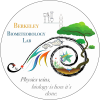Reports
Contents
| Title: | Testing of inexpensive DFRobot IRT sensors | ||||||||
| Date: | 2019-05-10 | ||||||||
| Data File: | LabIRTtest_20190429_window.csv DFRvsBlackBody_20190510.csv |
||||||||
| Refers to: | 7638,7385,TS01-001,TS01-002 | ||||||||
|
From the 25 of April 2019 to the 10 May 2019 we compare two Apogee ultra-narrow IRT sensors sn 7638 and sn 7385, specs here: https://www.apogeeinstruments.com/si-131-ss-ultra-narrow-field-of-view-infrared-radiometer-sensor/, with Two cheaper IRT sensors from DFRobot sn TS01-001 and sn TS01-002 Non-contact IR Temperature Sensor 0-3V, specs here: https://www.dfrobot.com/product-1823.html. The four sensors were measuring continuously a black wood panel near by a window at the same distance. First the TS01 were not shield, then they were shield with tinfoil. Figure 1. Time series of data recorded from the black wooden panel in the lab window. During the day when the sun is on the panel, shadows move across the panel leading the two models of sensors to see differently lit areas of the panel. So, high temperatures (unevenly lit) diverge while low temperatures (evenly unlit) are very tight. The FOV of the DFRobot sensors is really small (2.5 deg half-angle) in comparison with the 14 deg half-angle of the Apogee IRTs, so the Apogee sensors need to be closer to the target to measure the same area. We think the difference on the FOVs between the sensors causes the difference in between the values, the different behavior/limits when temperatures increase (DFRobot's aggregation/averaging is lower), and the points cloud shape when comparing them (they are measuring different things). Small changes (shadows, brightness) more strongly influence the small FOVs.
Figure 2. Regression of and Apogee vs a DFRobot sensor. On day 05/10 we also calibrate the DFRobot IRTs with a black body (BB). To achieve a range of values, first we put the black body in a freezer then measured it as it warmed to room temperature. When it reached ambient temperature, we heated the BB with a heat gun then measured again as it cooled. To record the BB values we took a photograph every minute. We also took video from the whole experiment, but data from the photos was enough to build the curve.
Figure 3. Time series of the two DFRobot sensors and the black body temperature. The calibration worked pretty well, also when compared with a previous calibration of an Apogee IRT (the limits were different because different freezer and hot air sources were used). The Apogee calibration had some strange behavior around 10 and 0 degrees. At higher temperatures was pretty stable, like the DFRobot IRTs.
Figure 4. Linear regressions of the two DFRobot sensors against the black body temperature. |
|||||||||
| |


